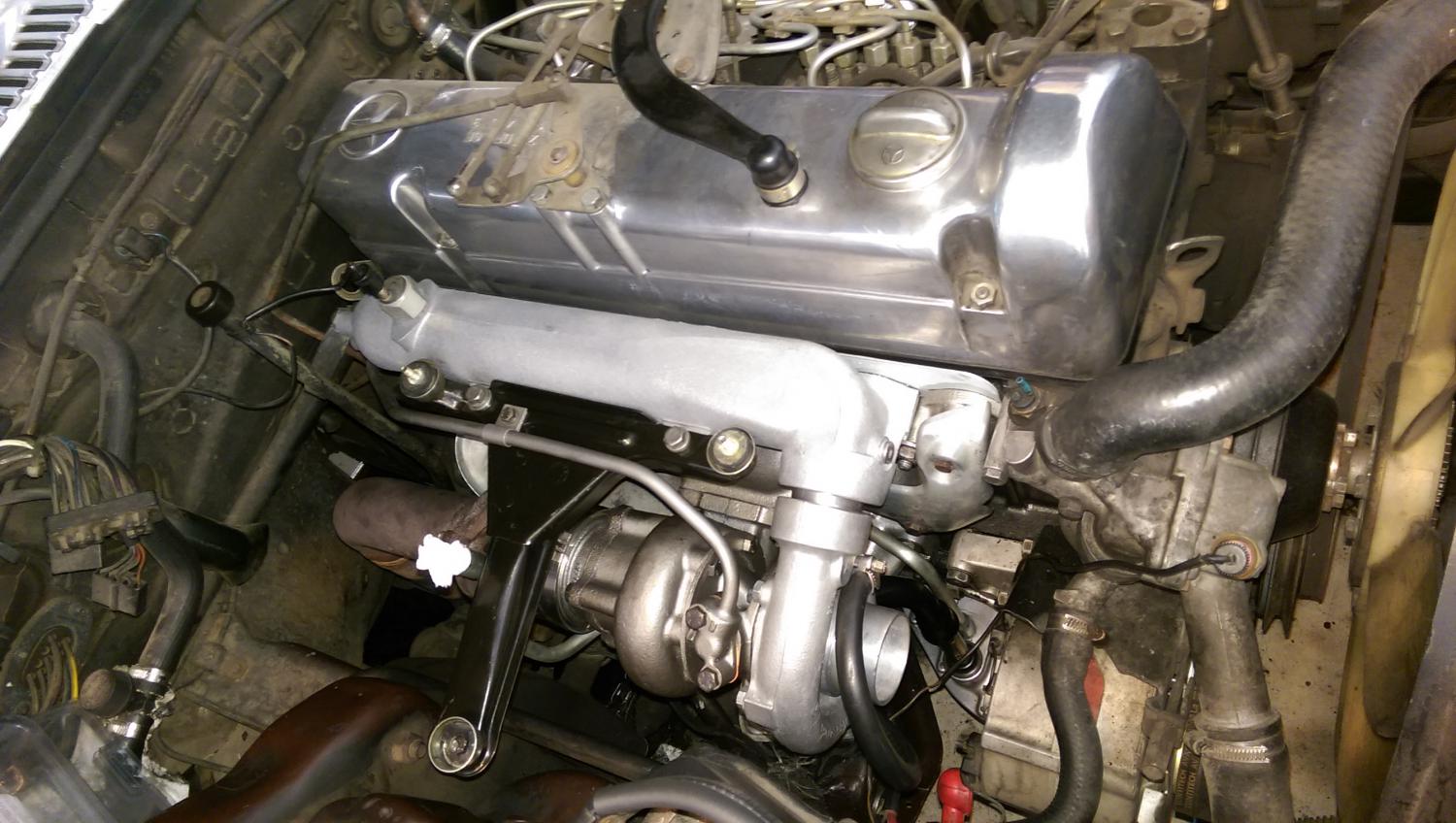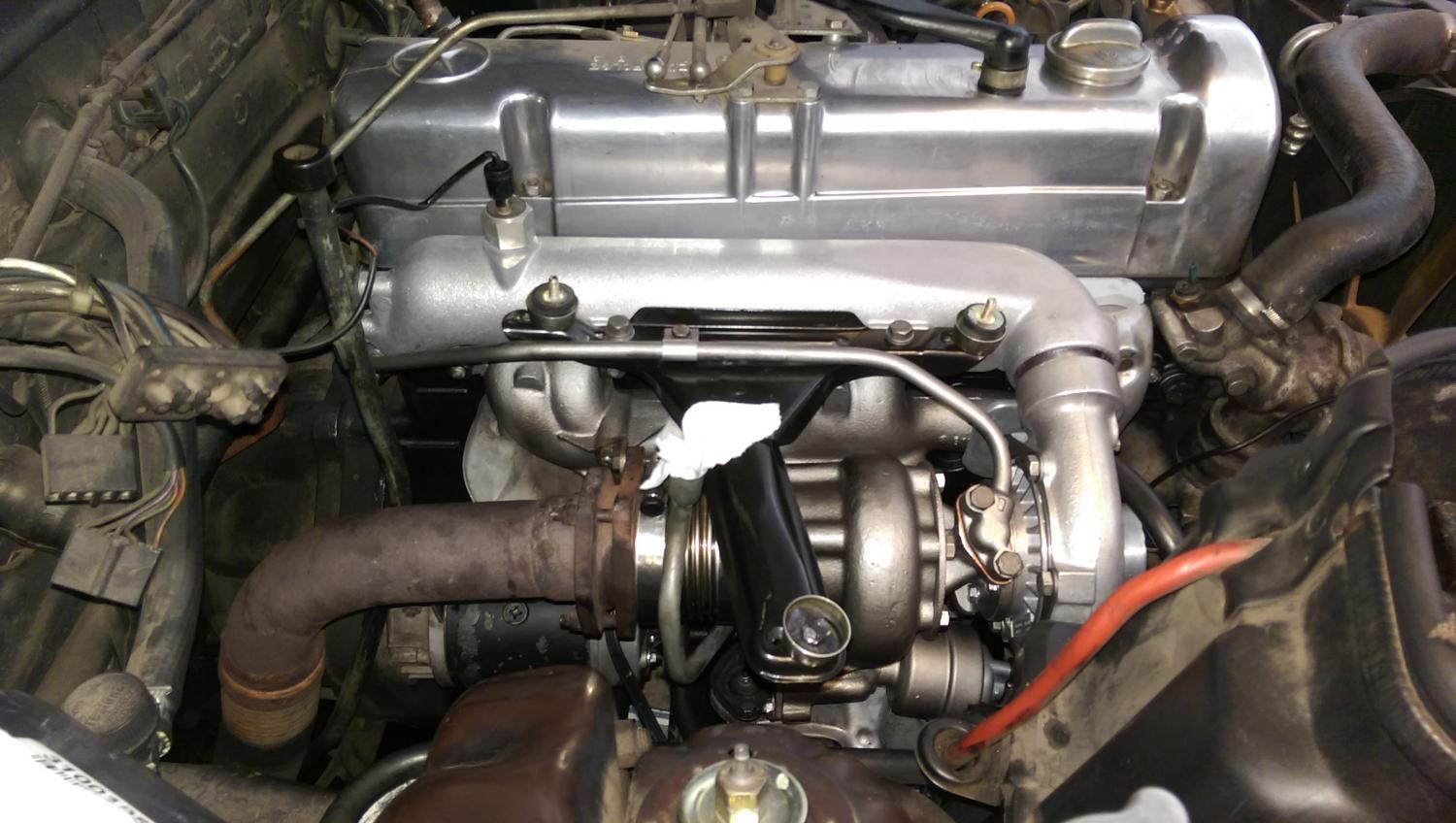Quote:
Originally Posted by Squiggle Dog

This is a late update, but the ridges of the turbo-to-exhaust coupler filled up with carbon in short order and the faint whistle shortly went away. I've since rebuilt the turbo and reinstalled the tube that goes inside the coupler. So, I don't recommend removing the tube inside.
When I ran the engine with the air cleaner off after installing the turbo, I could not hear any turbo noise when revving the engine, so I don't think that anything before the turbo is going to help with making the whistle heard. I also don't want to put any holes in the exhaust.
It's interesting that my previous 300SD had such a loud turbo whistle. It's possible it had a leak somewhere after the turbo that was letting out the sound. I noticed it had some strange large round metal gasket at the housing that I haven't seen on other Mercedes turbos.
At some point I may delete the muffler and resonator. I have a hole in the muffler, anyway. Like I said, I don't want the engine to be louder, I just like turbos when they spool up, like on every other brand of diesel. I tightened up the wastegate spring until I was out of threads, but the most boost I am getting is 12 psi, barely above stock specifications.

 |
Digging up an semi-old post, but I've recently had a couple issues pop up after replacing the manifolds on my 82 wagon with these same SD manifolds and it may be the same issue. In fact my bay looks exactly like this down to the buffer heat shields, albeit on an 82 engine. Almost as clean even save for soot at the rear now. First off the slight buzz/resonance and now sooty rear RH bay had me re-tightening the up pipe coupler at the back of the turbo mounting bracket yesterday. Mine was not uniformly secured at all three bolts. In the process of all the work that was previously done(replaced starter, rebuilt turbo with new cartridge, replaced drain seals and also the manifolds/gasket–and oh yeah, fixed the sheared wastegate hose) I may
also have nudged the up pipe a few too many times in the wrong direction and caused a rupture or weakened the flange to the point of failure. I haven't pinned down the source just yet. But it gets me to another issue with the turbo. I am not 100% on the trim that the replacement cartridge is. I could hear the turbo relax and wind down prior to re-tightening the up-pipe, but now that it is more properly secure, I am getting a sharp whistle-chirp to quiet under heavier, more purposeful acceleration when I use more of the lower gear before allowing up shift to occur. That is something I do a bit more on our wagon as it's got a 2.24 rear end vs a stock 300D ratio. I do have a boost gauge finally coming in the next couple days to check my boost levels.
I'm sure that the perceived sound of the turbo is partially due the fact that the wastegate hose was no doing anything, and that a nice tight turbo with good seals is more efficiently working. I do not want to risk damage to anything with an improperly functioning setup. Is there anything I should do after changing from the stock EGR setup to the EGR-less one I currently have? I've cleaned the banjo. I used the sensor on the intake manifold that was on already installed for the SD. I suppose I'm not really sure the turbo is "thinking" there is an egr valve hooked up, but I didn't think that had any impact on the level of boost as it's exhaust pressure that determines that.
So basically:
- How concerned should I be of the sharp spike of the turbo whistle>chirp>silence?
- Is it directly related to an exhaust leak after the turbo?
- How important are each of these to fix?
- Should I avoid driving the car on surface streets or freeway if my boost levels end up being in a normal zone(or just keep it off the boost and plan an extra ten minutes to get to work)?






